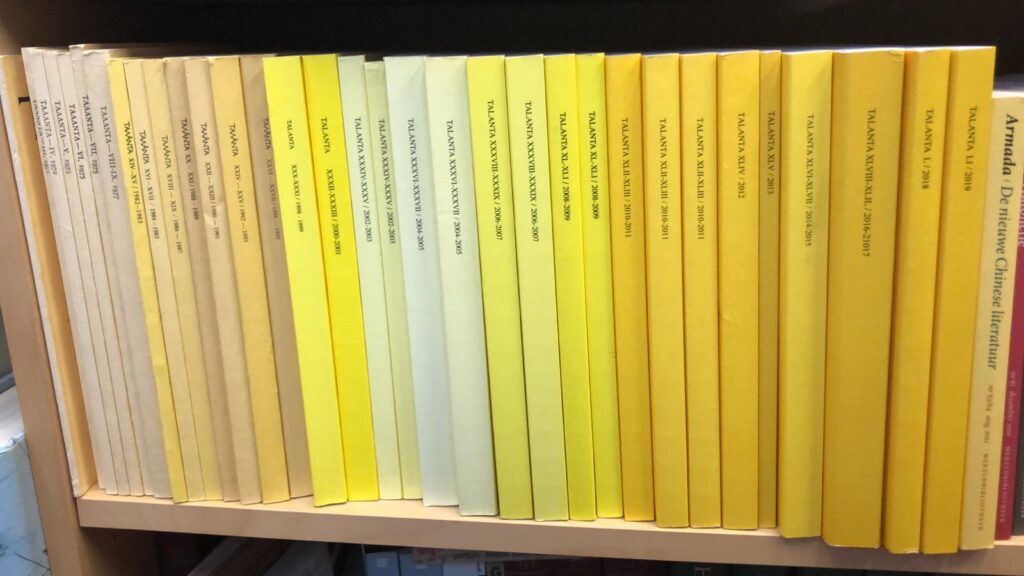TAΛANTA THROUGH THE YEARS (by J.P. Stronk)
In 1968, the Dutch Archaeological and Historical Society was founded in Amsterdam as an independent body of Dutch scholars (among them inter alios J.G.P. Best, M.F. Jongkees-Vos, H.W. Pleket and H.T. Wallinga) in the fields of Mediterranean Archaeology, Classical and Ancient Near Eastern Philology, and Ancient History. It was felt as an immediate necessity to create and publish a journal as well, if only to make clear and further the Society’s objectives, i.e. to stimulate a balanced and multi-faceted approach in the study of Ancient History in its widest sense, from the Bronze Age to Late Antiquity and the Early Medieval period. That journal was, and is, TAΛANTA, Proceedings of the Dutch Archaeological and Historical Society, to present its name in full, of which volume I was published in 1969. The name the journal usually goes by, TAΛANTA, was expressly based on the idea of striving to achieve a balanced view regarding the subject(s) discussed. That search for balance is represented by its logo, the central A being slightly greater than the first and last three signs, thus creating to some extent the image of a balance.
As such, TAΛANTA is a peer-reviewed journal for the study of Antiquity (ISSN: 0165-2486). Ideally it attempts to derive its interest from the need to break the barriers between different disciplines active in the study of the Ancient World. Occasionally, this may lead to the inclusion of controversial papers. So far such an inclusion has always been defended by pointing at the need to discuss each and every issue, even if controversial, provided that the papers in which such views feature are methodically sound. Another consequence of the basic editorial policy is that the board of the Society has always tried (and continues to do so) to appoint at least two editors of TAΛANTA, each of them with a background in a different discipline, supported by an executive editorial board.
In the early years of its existence, TAΛANTA was still part of a publishing house’s fund: it started at Wolters Kluwer’s, then Gieben’s and Brill’s, but finally, in 1986, the board of the Society decided that its objectives could be met best if TAΛANTA would be published independently (the first of this series being volume XVI-XVII (1984-85)), a practice followed since. In the process of production of each volume, the editors rely on the qualities of the pre-press officer, a position fulfilled by Beatrice de Fraiture, who has been taking care of preparing the papers for print since many years. In 2022 TAΛANTA moved its base to Utrecht.
TAΛANTA is, thus, devoted to the study of the Ancient World in its widest sense, but with a special emphasis on the Mediterranean world, the Near East, the Iranian world, and East-West relations, from the Bronze Age to Late Antiquity and the Early Middle Ages, as well as on the Roman provincial past. Consequently, it offers a broad variety of studies in Ancient History, Archaeology, Art History, and Classical and Near Eastern Philology, and, as a service to its audience, incidentally a book review section as well. Ideally, the review section would be a permanent feature of the journal, but to achieve that purpose the editors are dependent on external parties (i.e., publishers and qualified reviewers). Featuring additionally in TAΛANTA, both the Supplementum Ponticum and the Supplementum Epigraphicum Mediterraneum offer a range of more or less specialist studies on, respectively, the history and archaeology of the Black Sea region and the various languages of the ancient Mediterranean, all hoping to meet, one way or another, the requirements the Society’s ideals have set.

